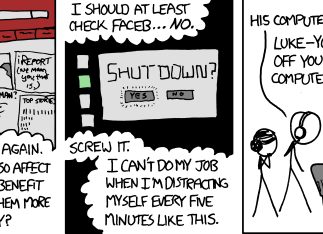On Magic and Talent
One of my “favourite” methods of procrastinating from schoolwork is with webcomics.

Source: XKCD
It’s far too often that when confronted with that quiz I have to study for, or that problem set that needs solving, or that assignment that I really shouldn’t be leaving to the last minute, I’ll instead take a “short break”, come across some new and interesting webcomic, and find myself hooked, clicking through its many-year-long archive one page at a time.
But this isn’t a story about procrastination. That’s just the backdrop. The story I want to tell is one of an interesting contrast, of “magic”, and of talent.
